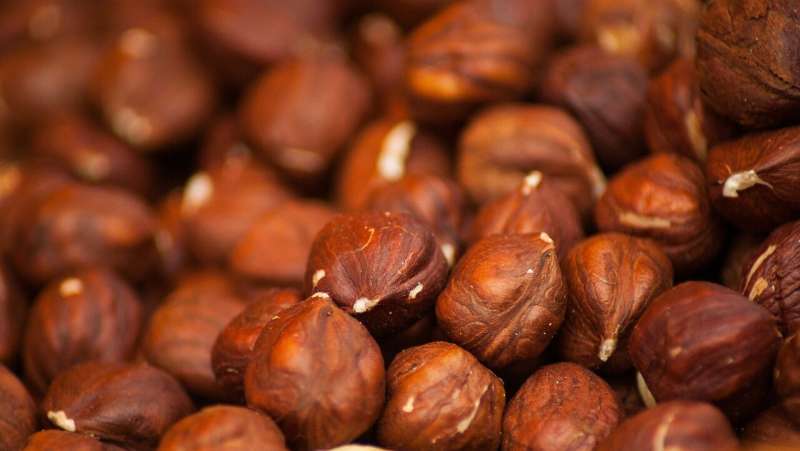Quinn on Nutrition: Don't overlook hazelnuts

Nutrition professionals have been singing their praises for years. Nuts (the type you eat) are rich in healthful fats and protein. In fact, a typical 1 ounce serving of nuts (unsalted, please) has as much protein as 2 ounces of meat, according to the most current Dietary Guidelines for Americans.
We have our favorites although most experts tell us to enjoy a variety of nuts a few times a week for our best nutritional benefit. One type of nut that is not exactly a staple in this country—although it is the state nut of Oregon—is the acorn-shaped hazelnut (also known as "filbert"). Perhaps that unfamiliarity will change.
A recent article from the Arbor Day Foundation (www.arborday.org) encourages home and professional farmers to plant hazelnuts for more than just their nutritional profile. Here are few of the reasons this tree-promoting organization outlines:
They help the environment. Hazelnut trees develop a deep root system that anchors soil to help prevent erosion. Their roots are active year-round, acting as a biofilter to help reduce nitrogen that could leach into nearby waterways.
These nut-bearing plants are drought resistant; they require less water than some other food plants. And they have a longer growing season than some crops, meaning they have a longer period of time to pull carbon from the atmosphere during photosynthesis.
They benefit wildlife. The hardy shrubs that produce hazelnuts house nesting birds during the breeding season.
Besides whole nuts, hazelnuts can be processed for oil, leaving the leftover hulls to provide a high-quality protein supplement for animals.
Nutritionally, hazelnuts are low in undesirable saturated fat and are one of the highest of all nuts in health-promoting monounsaturated fats, according to an article by registered dietitian nutritionist Sara Haas in Food and Nutrition magazine. A typical one-ounce serving (about 19 to 21 hazelnuts) also contains protein, dietary fiber, calcium, magnesium, potassium and folate.
Like other nuts, hazelnuts provide a healthful dose of vitamin E, an antioxidant that works alongside vitamin C to protect our cells from the ravages of daily living.
The thin outer skins of hazelnuts are especially rich in proanthocyanidins, powerful antioxidants that help keep our arteries clear. (The skin can also taste bitter and is easily removed by roasting the nuts for 10 to 15 minutes and rubbing with a kitchen towel, says Haas.)
How do you eat hazelnuts? According to oregonhazelnuts.org (where 99% of our country's hazelnuts come from) we can buy them whole, shelled, sliced, raw, roasted or ground. Enjoy them as snacks or in recipes from main dishes to desserts. Store hazelnuts in airtight containers in the freezer to prolong their shelf life for up to a year, say experts.
©2019 The Monterey County Herald
Distributed by Tribune Content Agency, LLC.

















